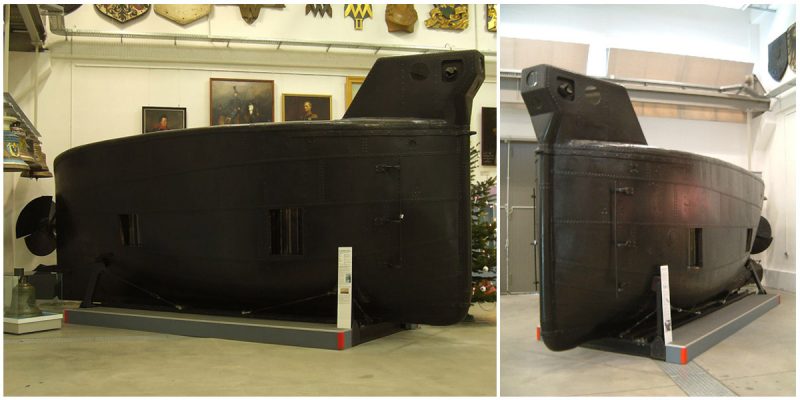The Brandtaucher (Incendiary Diver) was a submersible designed by the German inventor and engineer Wilhelm Bauer and built by Schweffel & Howaldt in Kiel for Schleswig-Holstein’s Flotilla a part of the Reichsflotte in 1850.
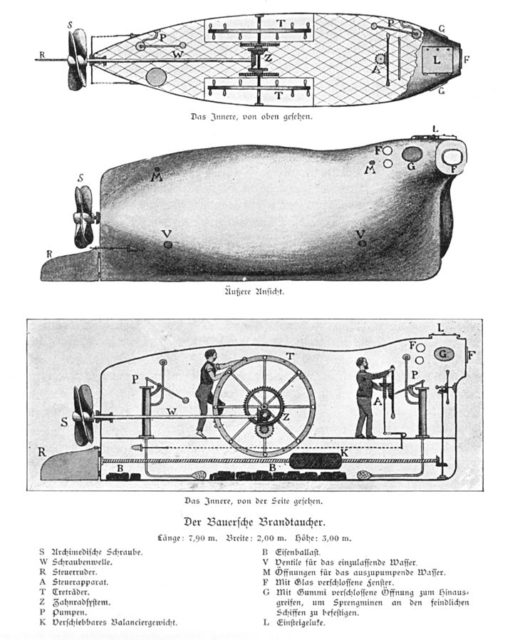
Bauer’s early sketch attracted the attention of the Minister of Marine, who allowed him to construct a model (70 × 18 × 29 cm). The model was demonstrated in Kiel harbour in front of naval dignitaries. After the model of the submarine proved to be working, Bauer was granted enough money to build a full-scale submarine.
But the military authorities still were largely against Bauer’s plan and forced Bauer to change his designs in order to reduce costs; resulting in a reduced diving depth from 30 m to 9.5 m.
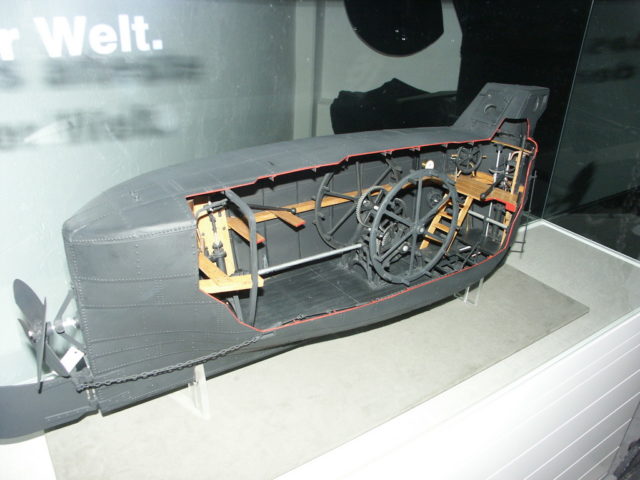
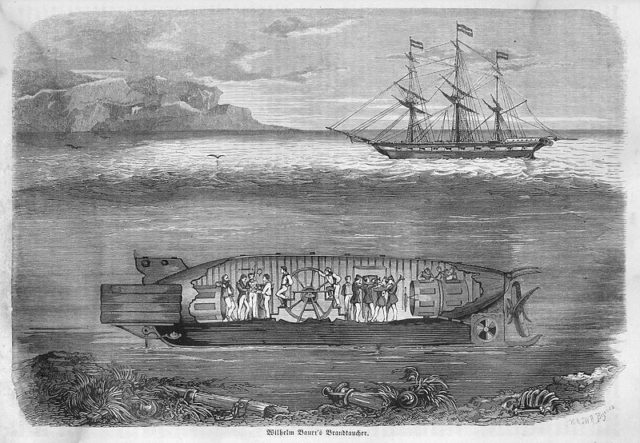
The finished Brandtaucher, built by August Howaldt of the later Howaldtswerke was 28 feet long and weighing about 70,000 pounds. This redesign included eliminating the use of enclosed ballast tanks to contain the water being taken into and expelled from the submarine. Instead, the water was allowed to pool inside the bottom of the hull, below the main floor, and was able to move relatively unobstructed within this area when the ship changed orientation.
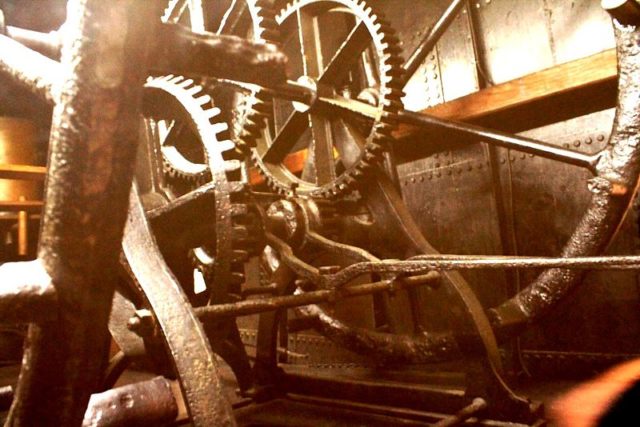
At the greater depths, the vessel was driven by electric motors using electricity drawn from giant internal batteries. These engines were very useful during the WWI and WWII because it helped the boat to stay in under the sea longer. The boat could reach a speed of 3 knots, but this could not be maintained for long periods of time.
The submarine was powered by two sailors turning a big tread wheel with their hands and feet. The third crew member, the captain, was positioned at the stern of the submarine. His job was to operate the rudders and other controls.
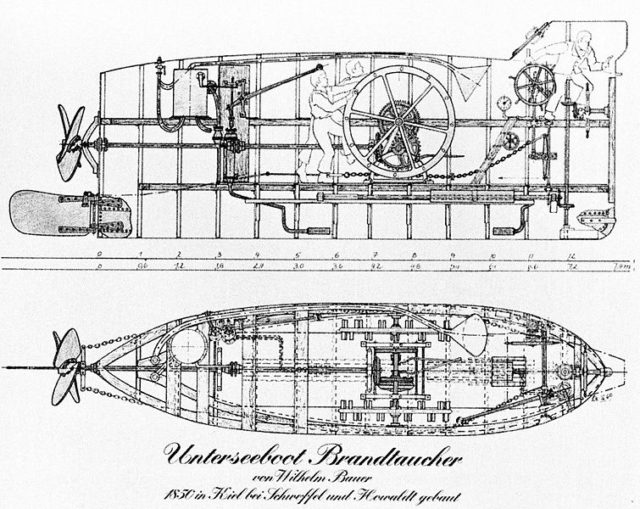
First trials of the submarine took place in December 1850. Although Bauer wanted to make several improvements of the submarine, the military ordered a public show on 1 February 1851. This public demonstration almost ended in a disaster. The submarine experienced equipment failure and sank to the bottom of a 60-foot hole at the bottom of Kiel Harbour.
As the submarine sank down, the thin walls could not take the water pressure anymore and started to crack. Bauer escaped by letting in water, thus increasing the air pressure, which allowed Bauer and his two companions to open the hatch and swim to the surface (for six hours Bauer and his sailors had to wait inside the sunken craft, until enough water had seeped in).
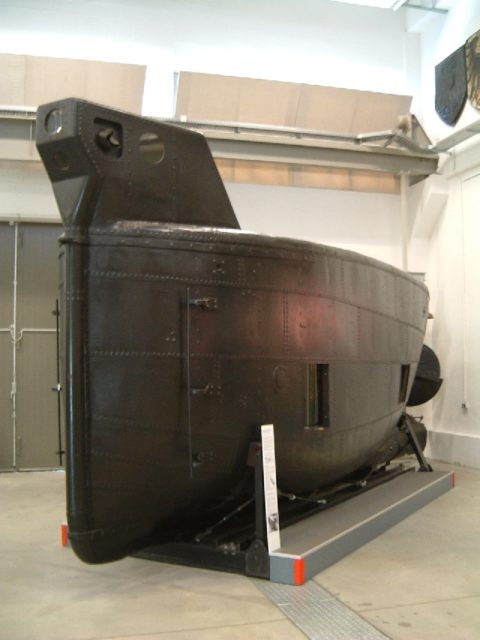
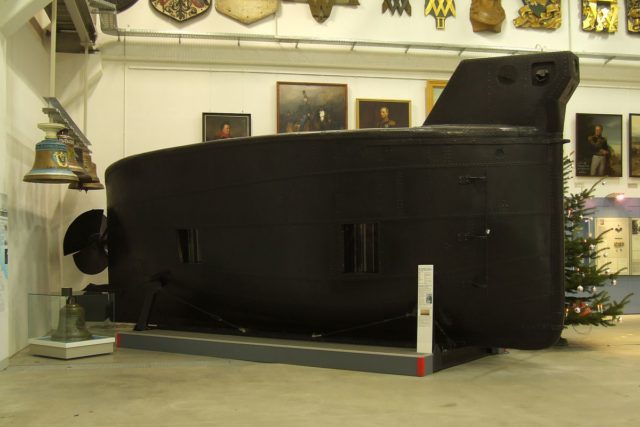
This was the first submarine escape to be witnessed and reported. Brandtaucher was recovered in 1887 and is now on display in Dresden, Germany.
